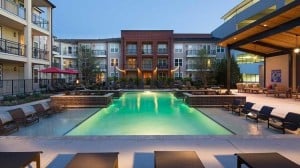Multifamily properties look for strong 2017 amid rent growth slowdown, lingering questions

U.S. monthly rent prices dipped $4, on average, in December, continuing a four-month-long skid in rent growth, according to Yardi Matrix, an apartment information service that compiled the data. The slide has primarily been pinned on the “considerable flattening” of demand. Key markets, including Houston, San Francisco and Boston, have each seen rent growth fall to negative 0.5 percent, 0.4 percent and 1.5 percent, respectively.
The skid wasn’t too surprising for Yardi Senior Analyst Chris Nebenzahl, who said the firm has seen a large uptick on supply, thus causing the slowdown in rent raises.
“As rents go up, developers and builders flood the markets with supply, and then you see the ebb and flow of rent growth,” he said, while also noting that the third and fourth quarters are typically the off-season for apartment hunters.
Still, when compared to a year earlier, rent prices are rebounding, up 4 percent in December with an average monthly rent price of $1,210 nationwide. Nebenzahl said the annual figures still stand well above the long-term average.
With multifamily developments remaining the apple of investors’ eyes – 49 percent say it’s the ideal investment in real estate, according to a recent report from Real Capital Markets – the market doesn’t look like it’ll slow down anytime soon, particularly in Chicago, despite the dip in rent growth.
Recent Chicago development announcements like One Grant Park and Essex on the Park are only the latest examples of the growing multifamily market in the city. But Chicago just edges out the eight-trailing year average of 2.3 percent for year-over-year rent growth.
Out of 31 major markets studied by Yardi Matrix, Chicago’s year-over-year rent growth only leads four cities – Baltimore, Boston, San Francisco and Houston – across all asset classes. The national rate of rent growth is at 4 percent, landing on the lower-end of the spectrum.
The top three cities with the most rent growth in December year-over-year were Sacramento, California; Inland Empire, California; and Portland, Oregon.
But as the industry dives into 2017, the unknowns for the year continue to press for answer. President-elect Donald Trump’s administration, which takes over Jan. 20, raises some questions for industry leaders, including what impact potential changes in taxes, tariffs, regulatory and foreign policies could have, Yardi noted.
The availability of housing in gateway cities is more prevalent than ever before though, particularly as millennials continue to demand more housing. With the underlying shape of the current economy as strong as it is – including a job creation rate of 2 million jobs annually and the current expected GDP growth for 2017 – Nebenzahl still feels confident about multifamily housing’s 2017.
“We still feel really strongly about the drivers for demand in multifamily,” Nebenzahl said. “From a multifamily aspect, at least for 2017, the fundamentals are all there for a strong year.”
Source: rejournals.com















 Accessibility
Accessibility